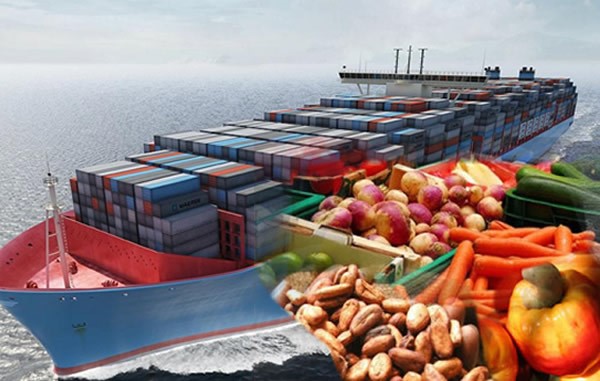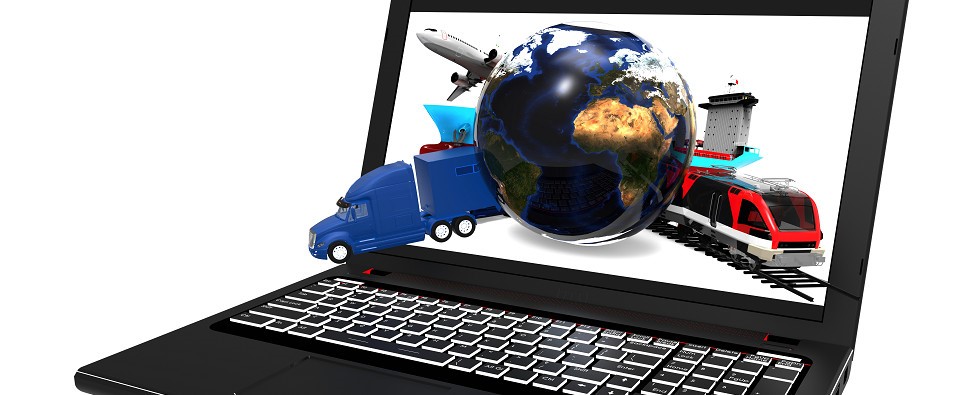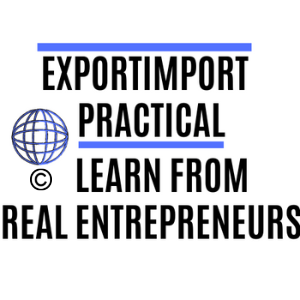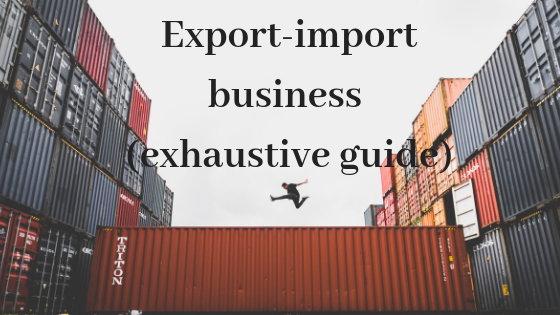Export import business – what it is how it works & how to start (guide)
Maybe you are wondering what is the import/export business? How does
If you answered “yes” to some of the previous questions, then the international trading business or import-export business is an option not to be missed. This article will give you all the answers.
We created this article, because when starting a new business, new career, having a new challenge then the feelings of fear and anxiety can overwhelm excitement and stop you making even your very first steps. And having such feelings is completely natural, it will disappear as soon as you take the first step.
We will help you get rid of the fear of the unknown and prepare you, making your first steps!
Structure and content of this article
Let’s explore the field of import and export and give you some of the basic knowledge you need, to prepare for the future of big export/import business!
– In the first half, this exhaustive article (guide) of export-import business, will explain you the nature and different types of export-import businesses out there.
– In the second half of the article, we will show you step by step, how to start your own export-import business.
Lets dive in!
1.What is export-import business

Export-import business has always 2 sides. Importing side and the exporting side. This means, if someone, somewhere exports something, then someone, somewhere imports something and vice versa.
Import and export are understood as trading businesses on the international markets. As the exchange of goods between countries against money. Interestingly there is still in use, a very different form of export import business – the barter exchange. Barter exchanges were common in the middle ages, then one commodity exchanged by another commodity, example spices against silk.
Export is understood as the sale of goods and services to another country.
Exports have long since appeared in the form of commodity exchanges between countries or territories. Over time, along with the development of the economy, as well as science and technology, export activities have been expanding with a variety of forms.
In export import business different currencies being used. Currency may be the currency of one of the two countries of the buyer, the seller, or another third country. For example: India exports goods to the US, using USD currency. In this case, USD is the foreign currency for India but is the local currency of the US.
In the case when India exports goods to China and also denominated in USD, the US dollar is foreign currency for both importing and exporting countries.
Import is one of the most important commercial activities of every nation. Especially in the countries which lacks of important natural resources.
Import is the purchase of goods and services from overseas for domestic demand or re-export for the purpose of profit. Importation is the purchase of goods from economic organizations, foreign companies or some times even from another country governments.
Importing is not a separate trade activity, it is a system of trade relations in an economy with both internal and external organizations.
The import of each country depends on the income and wealth of the residents and the local currency exchange rate to the international currency, lets say to the USD. If the average income of the country is higher, the demand for imported goods also increases accordingly. On the other hand, if exchange rates drop, the prices of imported goods in domestic currency will be higher. It will have an impact on imports.
Previous activities take place in all fields, sectors of the economy both with consumer goods as well as with capital goods. However, all of these activities are intended to benefit the importing and exporting countries.
Related article: Import-export business opportunities
2.Export import company
Also known as an trading company, merchant company, EXIM company etc. It is an company which proceeds the international transactions in the forms of importing or exporting. Export import company is the legal entity, trough which entrepreneur is proceeding the export-import business activities. Legal entity can be limited liability company, partnership, unlimited liability company etc.
With the development of the economy and globalization, more and more import and export companies are born. These play an important role in boosting the circulation of goods, creating business relations and exchanges with other countries and nations.
Import/export business is something what many entrepreneurs select nowadays to start. When enterprises want to conduct export-import business activities, enterprises declare tax registration information as well as EIC (Export-import code). EIC gives rights for “Import and Export” activities.
Information on whether the enterprise has registered for export or import activities is stated in the national business registration network, governmental databases etc. And is linked to many agencies such as taxation, customs.
In order export import company could export and import goods successfully, one must ensure that the goods are not banned.Also ensuring sufficient certificates of origin of goods as well as sanitary and quarantine certificates for some specific items.
Each country has their own rules and regulations regarding to the import and export of goods, capitals. As well as the regulations on the necessary documents and licenses, so you should learn thoroughly before starting export import company.
Related: Documents and procedures in export-import business.
3.Types of export import business
Here are some of the most common types and forms of the export import companies/ventures today. Each form has its pros and cons and what is suitable for one entrepreneur in one country wont neccesserly be the best solution for someone else in some other country.
3.1.Exporting business

Like the name is saying, this is a company, which is focusing on the export of the goods.
Selling to foreign customers is a way of expanding the market beyond the national borders, contributing to the increase of domestic businesses. This is also one of the major benefits that international trade offers. Additionally, usually it is possible to get higher profit margins from the foreign markets.
In the international scale, the large companies export many valuable items to the international markets. In addition to dominate the market, it also helps to market the company name/brand worldwide. Also countries with strong brands are also claiming their own brand. This can be seen through the contribution of big names of brands such as Microsoft, Apple, Sony, Toyota, Samsung, Hyundai, Lenovo, Alibaba….
These benefits for countries are
Export of goods usually takes place in the following forms:
- Goods which companies and people sell to foreign countries through border, land, sea, island and air routes.
- Transitional goods.
- Goods processed for export through a unit which signs a processing contract directly with a foreign country buyer.
- Products sold by foreign-invested enterprises to foreign countries.
- Items bought out by our specialists, laborers, students
and tourists. - The goods are also gifts and utensils what our resident population sent to relatives, organizations and other foreigners.
- The goods which are aid and assistance of the Government, organizations
and residents of our country to send to the Government, organizations and people abroad.
Learn more: How to start an exporting business
3.2.Importing business
This is a export-import company which is focusing on importing goods from foreign markets and distributing those in local market. Importing business can also import goods for the purpose of re-export.
International trade as importing is the exchange of goods and services between countries through purchase behavior. This exchange is a form of social relationship and reflects the economic interdependence between the separate commodity producers of different countries in the world.
In the importing business, the purpose of importing goods may be for domestic consumption, re-export to other countries, investment in production development … And imported products may be goods or services, intellectual products, invisible goods.
Importing business is a complex activity compared to doing business in the home-country market.
Import activities have the following characteristics:
- Import activities are governed by many sources of law. Such as international treaties and foreign trade, national laws of the countries concerned, and international trade practices.
- Trading methods on the international market are diversified: ordinary transactions, intermediary transactions, trade at trade fairs.
- The payment methods are diverse: D/C, barter, L / C, Direct transfer (T/T) etc.
- Currency used in payment is usually convertible foreign currency such as USD, pounds, Euro.
- For delivery conditions, there are many ways. Most common is import under CIF, FOB, DAP conditions:
- CIF (Cost, Insurance, Freight): It is a condition of delivery to the port of discharge, In an international sales contract it is often written with a seaport name.
- FOB (Free On Board): is a condition of delivery of goods liability exemption when the goods are boarded. Means that if the goods have not boarded jet, all responsibilities on the seller side. After the goods have been shipped, all risk, responsibility goes to the buyer.
Importing business is the international business, so the table is wide, complex procedures, long implementation time. Success of importing business depends on business knowledge, management level, market research, the speed of information capture and analyze, lowering of the risks.
In the importing activities, there are many risks involved. Many risks can be avoided and lowered.
Importing business is an opportunity for enterprises of different nationalities to cooperate in the long term. International trade has a direct impact on the economic-political relations of exporting/importing countries, contributing to the development of foreign economic relations.
Related article: Case study, how we imported from China and made 100K Usd
3.3.Import export Merchant
Import export merchant is an export import company which carries out activities of buying goods directly from a domestic or foreign manufacturer, then packs, ships and resells the goods on his own. Import export merchant can also deal with the importing.
For export import merchants it is common that they don’t have concrete direction, they are opportunity seekers. When they discover some product which could be imported and sold in the domestic markets for the profits, then they import. If they see some product has higher price in foreign market, then they may find best local source and export that product.
3.4. Import export agent

Increasingly popular form of starting an export-import business nowadays. It is popular, because operating as an agent, there is no need much startup capital, compared other, more traditional export-import business forms.
To open an export-import agency you have to:
- Choose your co-founders, if you don’t want to start alone.
- Choose the name of the agency, location of the head office, select the business form (Solo company, partnership, LLC etc).
- Open business bank account for your company.
- Carry out the procedures for registering a legal company at the place where the enterprise is headquartered. Depending on the type of business and the country, the application may be different.
Related article: How to start as an export-import agent.
3.5. Direct vs Indirect export import business
Export/import activities can be divided roughly to direct and indirect. Both has their own pros and cons. One need to choose the best option depending the situation and resources he/she has available. .
Direct export is the type of export business, managed by a domestic enterprise, which directly exports goods to a foreign enterprise through its own organization.
Advantages of direct exporting business:
- Reduces the cost of intermediary to increase profit for businesses.
- Allows to know the needs of end customers, based on which to develop appropriate business strategical plan.
Disadvantages of direct exporting business:
- High transaction costs.
- Higher risks in business because if direct exporter gets cheated, then all the cost and losses he needs to bear.
- Professional skills of exporters must be high. Being an direct exporter, requires sufficient business knowledge and experiences.
Indirect export is the form of export business where the exporter and the importer must pass through a third party, who is the intermediary. The third party is often an export-import agent or manufacturer representative agent, or local trading company ( merchant).
Advantages:
Reduces the cost of researching and finding partners, buyers. Creating favorable conditions for business such as expanding distribution channels, trading networks, understanding the market, reducing risks and reducing marketing expenses.
Disadvantages:
Exporters is dependent on the middleman.
With this form of business, the consignor will authorize another entity called the consignee to conduct the export on behalf of the consignor.
To carry out this type of export-import business, the entrusted enterprises should sign entrusted export contracts with domestic units. The entrusted party will sign the contract of export, delivery and payment for the foreign unit and agrees the export consignment fee for the consignee, to garant the export. Consignement fee is basically export-import agent commission fee.
Related: How to protect your commission fee.
Who often needs to use these kinds of middlemen?
Often, businesses that do not have enough information on foreign markets or have small business size. Businesses can export indirectly (entrusted) through export trading companies, professional exporters, export import agents, consolidators and exporters, or through another company to use their marketing channels.
Direct import is when goods are purchased directly from overseas without intermediaries. The exporter sends the goods directly to the importer.
In this type, importing company directly conducts the activities of seeking partners, negotiating the signing of contracts. An entrepreneur needs to invest their own capital in imported goods and bear all transaction costs, market research, freight forwarding, payment of goods consumption tax.
Importers should carefully study and determine all of the cost factors and rules related with direct importing of particular product(s). This will prevent the possible situation, where importer faces in customs a unexpected costs or restrictions.
In order to proceed the direct import process, enterprises shall provide the following documents to the customs:
The set of payment documents, including:
- Contract for import of goods (Contract)
- Commercial invoice
- Bill of lading (B / L) or (Bill of air – B / A)
- Insurance Policy
- Certificate of quality issued
- Packing List
- Certificate of Origin
- Quarantine certificate for agricultural products, food
In addition to payment documents, there are other documents such as:
- Customs notice
- Tax receipts
- Export Customs declaration
- Entry tickets
- Payment proof
The final set of documents which importer needs to present to the import customs, depends of many factors. Documents needed varies a lot, depending of the products being imported and the origin country.
Learn more about: Documents and procedures in export-import business.
Indirect import is activity through trade intermediaries – export-import companies, merchants, agents, export-import agencyes.
This method helps enterprises to lower the risk, but profit from this activity is not high.
Here middlemen having the function of directly dealing in foreign markets, to import goods based on the requests of their clients (indirect importers). Indirect importers then are doing the reselling of the goods in local market.
The consignee (direct importer) will negotiate with the foreign party to carry out the import transaction at the request of the consignor (indirect importer) and shall be entitled to a commission called the consignment fee or commission fee.
Very often, the consignee is just an company, which has the required importing license and capital to perform the actual import transaction. These companies perform the import procedures and add their margin and then sell to the local company ( indirect importer), who ordered these products.
Indirect imports
3.6. Online export import business (e-commerce)

Together with the increasing volume of online services such as e-customs, electronic origin certificates and many other import-export related public services. Internet network to exchange information, support business with seeking foreign partners, finding buyers, enter into and implement production and business contracts. All this combined, has been boosting e-commerce.
Normally, if looking for new buyers, large enterprises have a huge advantage. They have enough funds to open representative offices, take part in trade fairs, visit potential clients. In contrast, for a small
But nowadays, Import-export businesses do not have to spend a lot of money to invest. Sometimes, just computer and internet are main resources. Online, there is no need to afraid of time or space differences.
Ecommerce has no limitations on big business or small businesses. It will create more business opportunities for all businesses.
Importers and exporters can now find foreign partners through e-commerce transaction centers and through this channel they can even sell directly to overseas consumers. They can import goods at reasonable cost from everywhere
With “e-commerce transaction centers” we mean online platforms like Alibaba, Ebay, Amazon etc.
The role of internet for export-import businesses:
- Creates new opportunities to interact with customers at all times, globally.
- Allows promote the products and brands the fastest way.
- Provides Intelligent product search function to reach and retain customers.
- Improves customer support: consulting, multilingual web, store data access.
For an ecommerce company a website plays an critical role. In order to create professional website you need to pay attention to the following. When designing your website:
- Determine the purpose of website development.
The first basic requirement when designing a website is to determine the purpose of the site. For different purposes there will be different features as well as different data architecture. - Identify the site’s visitors, their access to the internet. Who are your potential clients? This will help to determine in what language to show the content on the website, the details of the features at any level.
- Which information should be posted on the website: Once you have identified the target visitors, you will craft the content posted on the web, to be the most relevant for your clients..
- What are the management services integrated on the website: When you answer this question correctly, it helps you determine the complexity that the website will have, reduce unnecessary investment in the business, and give your customers what they really need.
- Determine the time and money to deploy your website: Your goal is a really professional and useful website. Determine the exact time-schedule to build your website so that you have time to prepare the necessary content, resources.
To bring targeted visitors (potential customers) to your site, you need to know, how to get traffic to your site. There are lot of options available, we have handled some of them such as social media, paid adds in our article – How to find buyers.
4.Minimum Investment for import export business

Investment is an indispensable prerequisite for any business in the current market economy. Therefore, the initiative to mobilize an measure the use of working capital, is very necessary to improve the efficiency of investment in any company.
For every business, the need of minimal investment can be different. Investment size depends on various factors such as: company structure, no of co-founders, business model, products planned to be sold, scale of the business etc.
All must start with careful planning and estimating. Entrepreneur must count all the relevant costs and expenses what are needed to start up and break-eaven. Breakeven is the point on the revenue scale, where company is not jet profitable, but is also not losing the money.
4.1.How to calculate the investment for export-import business
In every business, there are 3 types of main costs. There are fixed costs, variable costs and one-time costs. There are also more complex costs like progressive costs and undirect costs. For export-import startup, to estimate the minimal investment, these are not so important to consider these.
We will explain you the 3 most important one,
based on these, you can calculate rough investment need for your export import business.
One-time costs
are such, what entrepreneur needs to bear one time only. Example company registration cost, business certificate or license application etc. Here you need to count all such kinds of costs.
Fixed costs
Are such like office rent, warehouse rent, staff monthly salary. Those are costs what are same every month.
Entrepreneur must consider and count all the fixed costs per one month. Then need to consider, how many months company need to operate to reach to break even. For new company, fixed costs should be as low as possible.
But you cant determine, how many months you need to “burn money”, before you reach to break-even, until you don’t know the variable costs and profit margin per product unit.
Variable costs
Are costs, which depends directly on the products being sold (revenue). It means, the more pieces you sell, then totally the more variable costs (as sum) you will have.
Most common variable costs for export-import companies are: product purchase costs, packing costs per product unit, transport and delivery cost per product, custom and insurance, bank costs etc.
Entrepreneur must calculate all the variable costs per 1 unit of product.
After that you need to estimate, how many pieces you need to sell, to be able to cover monthly fixed costs. You can only calculate the volume, if you know, how much of profit you are going to make from one sold product unit.
Profit margin
Is the amount of profit you make per each product. If you sell one unit of product and you subtract from it the variable cost then you will have the profit margin.
All the previous, what you read, can put into a
Break-even point
X (SP-VC) -(TFC) = 0
TFC- Total fixed costs per 1 month
OTC– One-time costs (total)
PM– Profit margin per one product unit
SP- Sales price per one product unit
VC– Variable costs per one product unit
X– The volume of sold products every month
Estimating the minimal investment for EXIM company
So, to calculate the needed start-up investment for your export-import business, you do following calculations.
- Estimate all costs, expenses, selling price and give value for each of the parameters, explained above.
- Make sure, how many units you need to sell every month, to reach to the break-even. (Find the value of “X”)
- If you know, how much you need to sell, to reach break-even, then, estimate, how many months it will take, to reach to this monthly selling volume
- Multiply the no of months with the calculated monthly fixed costs. Then add for it the sum of one time cost. Finally, add the needed working-capital (free money on bank account, to purchase the products).
- The total sum you got in point no.4, you multiply it with coefitsent of 1.25
Previous easy methodology will help you to calculate and estimate your needed minimal investment for your new export-import company roughly.
We also suggest set up the financial reserve fund, the bad debt fund, the reserve fund for the sale of unsold goods and unexpected expenses.
5.How to start export-import businesses
5.1 How to start an importing business
Before you read further, be noted that our team here at exportimportpractical has created
You can check here: EXIM online courses and personal mentoring.
So, before you decide to import the particular type of product(s), you
1.Why you want to import this merchandise instead of other goods, what is the general reason for importing: (WHY)
- Create and develop the domestic market for “niche products” (products not yet widely available jet).
- Raw materials for finished products. For example, the yarn company imports plastic resins to produce Tire Cord, Tire Cord Fibers for Tires.
2.Determine when to import goods. (WHEN)
- For example, do not enter summer clothes when it is approaching winter.
3. Determine the exact goods to import (WHAT)
- You need to carefully consider whether the goods you intend to import, may be sold in the market.
4.Determine where, from which country you will import (WHERE)
5.Determine how much you will import (HOW MUCH)
- Do you need to order a full container or LCL – Less than Container Load (combined with other goods), by sea or by air?
After you have answered the most important questions above and you have chosen the product you really want to import then it is time to move on.
5.1.1.Find and select right suppliers
NB! We have a personal buyer/supplier finding service.
So, how do you find and identify suppliers? There are currently many sources worldwide that can help you identify effective vendors/suppliers
- Virtual sources: commercial portals, websites, blogs, magazines, …
- Offline resources: trade fairs, consulates, chambers of commerce, word of mouth.
With any choice, one thing to keep in mind: “check the reputation and credibility of the supplier”
You can ask the vendor a few questions like:
- How long have they been in business?
- Have they ever exported their products to your country? If yes, ask them to provide you with existing customer information as an reference?
Verify that the company, from which you plan to purchase is a legal entity.
There are many unreliable intermediaries who pretend to be suppliers, manufacturers, sellers, and so on.
If you are new to business, then it might be better to visit a partner to verify that the company and the products are genuine. Many importers lose everything just because they do not check the supplier properly.
If it is not possible for you, to visit the supplier, then you could do indirect importing or you use inspection service and let third party inspect the supplier behalf of you.
We have an article, about the risks in export-import business and how to lower and avoid these. We suggest to read it: Risks and how to overcome these.
Next are the key factors in understanding and choosing the terms of sale
5.1.2. Agree the terms of sale
Once you have proven that the supplier is a reliable, then you should have the discussions and negotiations with the seller about the terms of sale, warranty, delivery, price etc.
Be sure to sign contracts with suppliers! You should clearly outline the main terms in the contract such as:
- Purchase quantity
- Each party’s responsibility
- Terms of delivery and terms of sale
- Commodity prices
- Delivery location agreed: port, warehouse, …
Before signing the final contract with your supplier, make sure you:
- Understand the importing process.Contact your agent, shipping line or customs office, port, or chambers to learn more about their roles and how the whole processes work.
- Contact your country local customs office to find out:
- What are the requirements to become an importer. Each importer needs to register with the customs office in his / her country to receive the importer’s code.
- The goods you want to import are licensed or restricted somehow?
- Are there any restrictions, permits, required?
- What are taxes and tax incentives that you are eligible to import gods into your country. May depend on the company, product, country of purchase, etc.
5.2. Basic steps to start an export business

Starting an exporting business requires going trough similar steps and processes as we previously
Below are key steps and stages everyone needs follow trough.
Step 1: Market research
Market research is important in developing and improving economic efficiency. For a
Market research must answer at least the following questions
- What
is the export market and its size andstructure. - Who is the customer, their tastes, habits, purchasing
power. - What is the structure of the
suply -chain. - What are the prices and price
fluctuations theon market. - Who are
most important competitors and what are each ofthem unit selling proposition (USP).
Market research will give the inputs, to work our the effective business strategy and plan for every stage of the
We have written in depth article about: export marketing and how it helps to get orders.
Step 2: Select the business item (product)
Once you’ve got yourself a list of what you want to export, choose the one that you think is the best for your business. The products that can be on your business’s ability of capital, also from the sources supply to you.
Learn about the product, how it is made, how it is used, or the historical and artistic aspects it brings. Read the forums talk about it. Get the information about it in the most detail.
Based on the previous research and analyze, outline the criteria for determining the value of their products: price, quality, warranty, accompanying products, etc.
Step 3: Create a business plan
After the research and analyzing, it is time to put together a business plan. On the basis of the evaluation of foreign markets, the possibility of consuming export products for such markets, the export business unit shall set objectives for each specific stage.
Stage 1: For market entry, selling products at low prices to compete with the same products, creating favorable conditions for consumers to try and gain market share.
Stage 2: After entry, gradually raise the selling price to make a profit. This goal, in addition to the real element, should be in line with the company’s ability to achieve the goals and created sufficient profits for the owner..
Stage 3: Remaining the market share. In this stage,
Step 4: Determine the sales distribution channel
There are many channels you should take advantage of, each distribution channel will have different advantages and disadvantages. do not depend on the channel, depends on your own thinking.
Social media
Related article: Export marketing brings export orders
Step 5: Open a business bank account with letter of credit at your bank.
Opening a business account has the following advantages:
- Represent the professionalism of the business
- More convenient in payment transactions and receive payment with customers, saving time, costs.
- Proof of eligibility for purchase invoices
Depending on the country, region but generally to each bank you can approach and open an account in the nearest bank to you. It will help to simplify when dealing with international transactions.
Step 6: Prepare documents/licenses for exporting business
Obtaining a prior import / export permit is a mandatory requirement for all businesses when they want to export goods abroad.
If the goods are exported through multiple border gates, the agency will issue a transcript to the foreign trade enterprise. Whenever goods are actually received at the border, the customs office shall make a countermeasure to the tracking card.
5.3. How to start export import business from Home

Importing / exporting at home will save you a lot of time and money. Home-based business is a real dream. Stayng at the office gradually becomes a nightmare for most people. At home you can start an e-commerce business or an export-import agency or some other export-import related service business.
Related article: Best export-import business ideas
E-commerce can be divided 2- types of export-import businesses.
- Selling your own products online, trough your own website or e-commerce platforms like amazon, ebay, aliexpress etc.
- Selling (marketing) other company products online. Where the supplier is also responsible for delivery – this is called a drop shipping business.
If you are interested to start as an export-import agent, then read more about it here.
Starting export-import business at home, requires heavily using online possibilities and tools.
Lets assume, you want to start drop shipping or selling your own products online.
There will be 3 important steps you need to master. Every successful e- commerce at home must go through these 3 steps:
Step 1: Select the right product
There are 2 criterias for choosing products:
- Select products that have not been sold
- Choose a product that has many sellers, but unique models only you have.
To know this, you have to research the market before embarking on an online business.
Step 2: Marketing of the product
The two main marketing channels are offline and online.
Offline channels used outside the “virtual world”, for example: newspaper ads, signs, leaflets.
Online includes online marketing channels such as website, electronic newspaper, SEO, Facebook, youtube.
Step 3: Shipping
Once you have selected the product and have the appropriate marketing methods, the final stage is delivery. If your area is large enough, you can invite the customer to view the goods. If your home is small to keep the products (either in a deep alley, or in the suburbs, or in distant lands), you can choose to delivery.
You can Google the keyword “delivery service” and select the appropriate service supplier according to the following criterias:
-Price
-Have a reputation (check whether this company is complained or not)
-Delivery area
-Delivery time
-Collection of money
Once you have selected the delivery service, try using it. Check if they are delivered on time; the money they send back to you quickly or slowly; Do they damage your product when shipped? If these problems occur, STOP using the service immediately and switch to another ones.
6.How profitable Is export import business?
It is estimated that tens of thousands of new export import companies are established each year, along with the support of the government and investors in 2019, promises to give even more new ventures than 2018. This shows that the import export business environment is very “mature”.
One of the factors that can not be ignored when referring to the import-export industry is that the wages are somewhat higher than those of the general economic sectors. This indicates, that export-import companies generate higher profits than average.
To talk about the profitability of export-import business then the margins vary a lot. Direct exporters and importers tending to make the biggest profits. From our own practice, we can tell, that profit margin from annual turnover 15-35% is quite normal.
But there are
So, is it is worthwhile to start export import business?
The
Profitability depends about 80% of the right chosen product(s) and selecting the right products depends on the market research and analysis.
7.Export import business opportunities and challenges in asia
Under ASEAN’s Agreement on Trade in Goods (ATIGA), ASEAN abolished import tariffs with 96.01 per cent of total tariff lines from the end of 2016.
Under the plan to 2018, the tariff elimination rate ASEAN-6, CLMV and ASEAN average will be 99.20%, 97.81% and 98.67%, respectively.
This all makes
Companies must take the initiative in strengthening the management capacity, renewing the quality of human resources, linking the global supply chain, creating the competitive edge to take advantage of all opportunities provided by the commitments.
In the long term, the company has to develop strategies, build brands and set up distribution system to the end consumers to move quickly.

